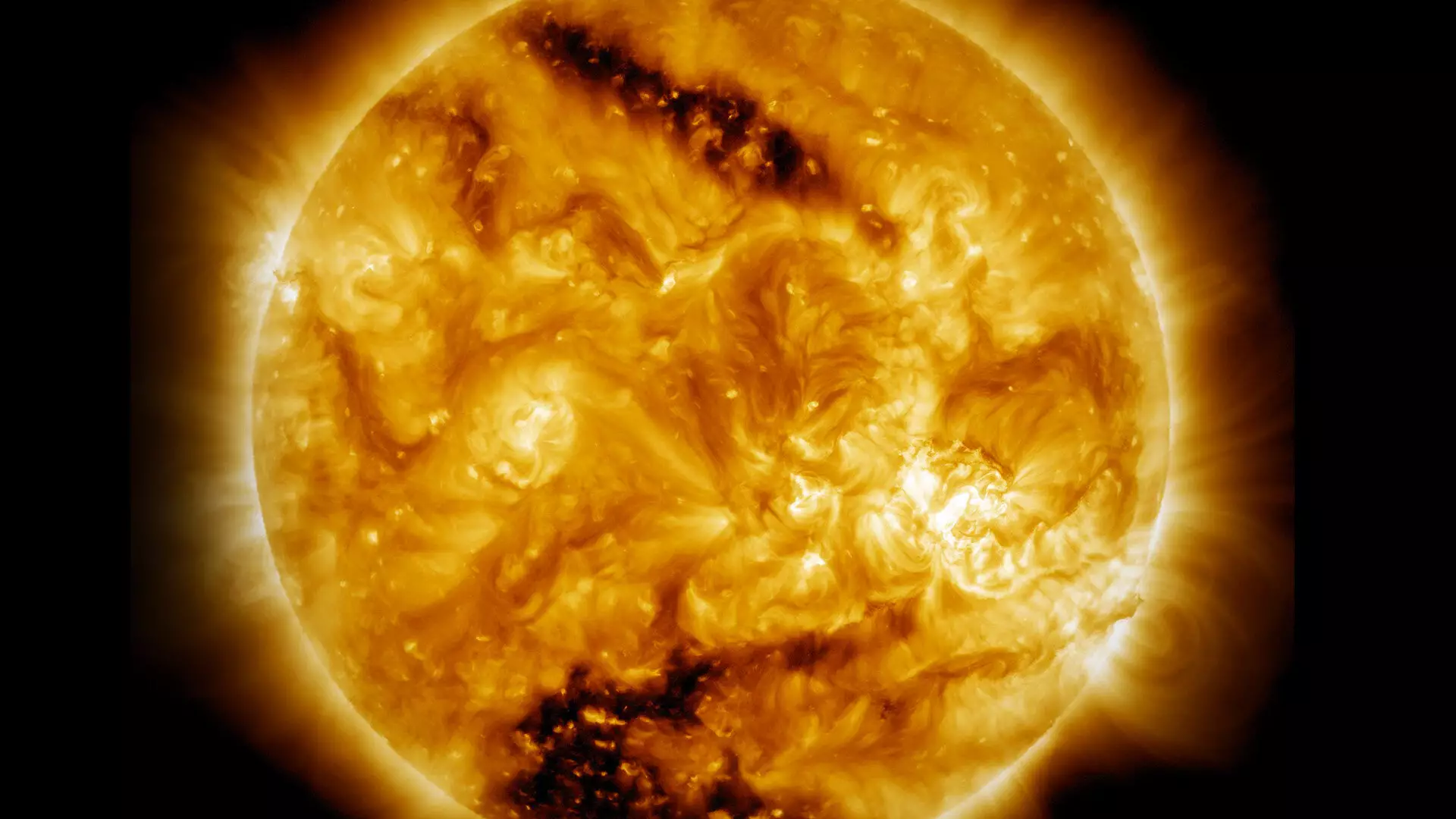The sun, a celestial body shining at the center of our solar system, continues to enthrall scientists and enthusiasts alike with its myriad mysteries. Perhaps one of the most profound puzzles is the temperature discrepancy between the sun’s surface and its outer atmosphere. While the surface temperature hovers around 10,000 degrees Fahrenheit, an astonishing elevation is recorded in the solar corona, where temperatures soar to approximately 2 million degrees Fahrenheit. This staggering difference, which makes the corona around 200 times hotter than the sun’s surface, has eluded explanation since the high temperature of the corona was first recognized in 1939.
Since that initial discovery, researchers have engaged in a relentless quest to unravel this enigmatic phenomenon. How can the outer layers of the sun possess such extreme heat, despite being farther away from the sun’s core? This question has led to numerous hypotheses, but definitive answers have remained elusive. The lore of solar physics suggests that the answer may lie in complex interactions involving magnetic fields and plasma dynamics. Recent advancements, however, signify that we are edging closer to demystifying this conundrum.
A pivotal development in this field has come from the U.S. Department of Energy’s Princeton Plasma Physics Laboratory (PPPL). Under the leadership of Sayak Bose, a cutting-edge study has made a breakthrough regarding the potential heating mechanisms of the solar corona. Their research posits that reflected plasma waves might play a crucial role in heating coronal holes—areas within the corona characterized by lower density and open magnetic field lines that extend into space.
Scientists have theorized about the existence of these mechanisms for years, yet until recently, empirical validation remained absent. Alfvén waves, named after the Swedish physicist Hannes Alfvén, are pivotal in this research. They can be likened to vibrations created when a guitar string is plucked, triggered here by the oscillation of magnetic fields within the plasma. The significant contribution of this research has been the experimental demonstration that Alfvén waves can reflect under conditions mimicking those found in coronal holes.
The experiment conducted by Bose and his team at the Large Plasma Device (LAPD) at UCLA involved exciting these Alfvén waves to examine their behavior in a controlled environment. The research revealed that when these waves encounter regions of differing plasma density and magnetic strength—similar to conditions near coronal holes—they can reflect back towards their source. This interplay results in turbulence, which subsequently contributes to heating. Such laboratory validation offers the first concrete evidence supporting the hypothesis of wave reflection leading to enhanced heating in the solar atmosphere.
The findings hold important implications for our understanding of solar dynamics, especially in the context of coronal holes. Jason TenBarge, a visiting research scholar at PPPL, emphasized that this study not only verifies the reflection of Alfvén waves but also quantifies the reflected energy necessary for heating coronal holes. As we redefine our grasp of the mechanisms governing solar phenomena, it opens avenues for further research into solar activity, including solar flares and coronal mass ejections, which significantly affect space weather.
Furthermore, the team utilized computer simulations, providing a robust framework to cross-validate their experimental results. This multi-faceted approach enhances the credibility of their findings and illustrates the evolution of solar physics as a cohesive scientific discipline. According to Bose, integrating experimental data with computational modeling yields profound insights into natural systems like the sun, advancing our comprehension of its behavior and interplay with the solar system.
The contributions from various institutions—including Princeton University, UCLA, and Columbia University—illustrate the collaborative nature of modern scientific inquiry. As researchers from different backgrounds unite to explore the complexities of our sun, their collective efforts enrich the scientific community’s understanding of cosmic phenomena. The ongoing experimentation and exploration into the dynamics of the solar corona will certainly propel future studies, contributing invaluable knowledge to fields ranging from astrophysics to space weather forecasting.
As we peel back the layers of solar enigmas, we inch closer to unlocking the secrets of our sun—an endeavor that not only informs us about our star but also deepens our comprehension of the broader universe.

